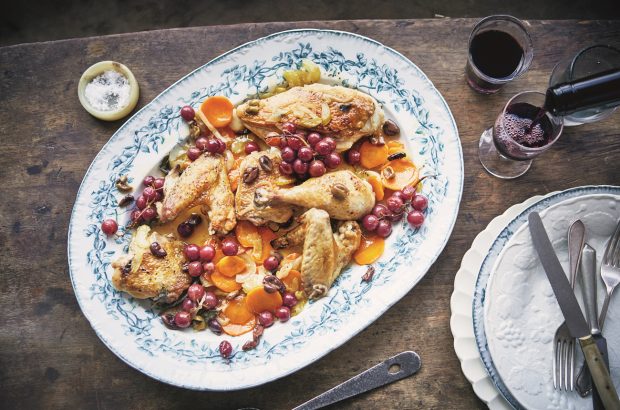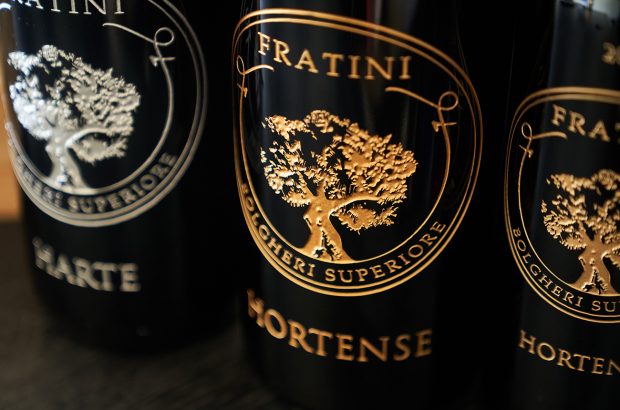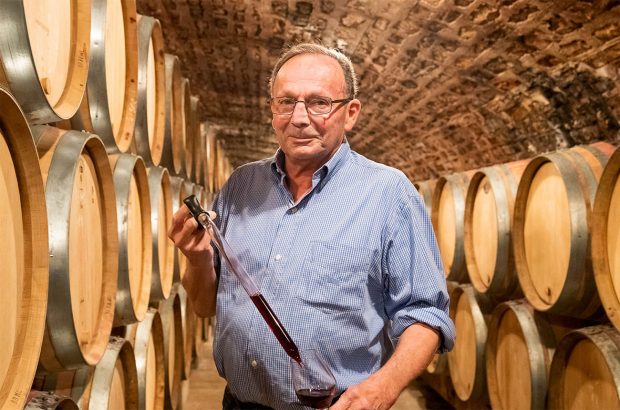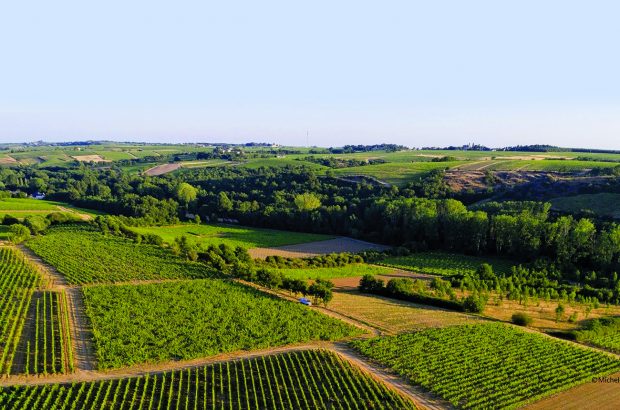When Rioja wine prices rocketed towards the end of the 1990s, buyers started to look elsewhere. JOHN RADFORD highlights the best affordable Spanish regions giving Rioja a run for its money.
They did it in Champagne, they’ve done it more than once in Bordeaux and, in 1999, they did it in Rioja. Sooner or later all great wine regions start to believe their own propaganda and think that the world can’t do without them. The world, however, has a different way of working. They gasped when the price of Rioja wine grapes went above 400 pesetas per kilo during the harvest of 1999. There wasn’t even a shortage, as there had been in the splendid years of 1994 and 1995 – indeed, 1999 provided a good-sized harvest in terms of quantity. And it wasn’t the special quality of the grapes, either.
Seven of the best Champagne houses to visit
Simply put, after a number of years of increasing wine prices and burgeoning exports, the growers just thought that they ought to get more money for their grapes. The price had reached 250 pesetas per kilo in 1998, they asked for more and the bodegas, astonishingly, paid up. After all, grapes have to be harvested at the right moment and the longer you argue about the price, the later it gets. The winners in this particular game of poker were the growers and those bodegas that owned their own vineyards. The losers were the bodegas that supplied the large-scale supermarket trade. The result was yet another price hike and the export market extracted its revenge. Exports fell by 15% as horrified Riojanos watched the major buyers jetting off to South America and Eastern Europe in search of something red for the UK £3.99 price point.
Prices fell rapidly in the spring of 2000 and by the summer sanity had returned. The price of grapes for the 2000 harvest averaged 150 pesetas per kilo, but it was too late by then – the mass-market wine-retailing business works six months to a year ahead and the new price point wines were already on the water. Rioja had work to do, but it seemed the day of the £3.99 bottle had passed. Indeed, some bodegas (largely, it has to be said, those at the top end of the market) heaved a sigh of relief and remarked that cheap wine had done nothing to bolster the region’s reputation anyway. However, Rioja is not the only Spanish wine and to a Spanish wine enthusiast it can be more interesting to know what’s going on in the ‘hinterland’. The Salón Internacional del Vino, which took place in Madrid in February, was attended by a wide range of Spanish producers, particularly those looking for national and/or international profile, export opportunities and even feedback from visitors. In the following recommendations, you’ll find wines from forgotten and obscure regions, wines which are finally getting there in terms of quality, and wines which have come back from the dead. Where the bodegas have an agent or importer over here, that is given. Those which do not are listed as ‘SR’ (seeking representation), although by the time you read this the Wines from Spain Trade Fair and the London Wine Trade Fair will have taken place, and who knows what new alliances may have been forged?
Insider guide: Rioja restaurants
DO Utiel-Requena
Living in the shadow of Valencia, it’s not surprising that the wines of Utiel seldom get a mention, but they’re making some nice, clean, fruity reds from Bobal. Cerro Carpio from the Coop la Protectora (SR) is a workmanlike red, made mainly from Tempranillo. Torre Oria is one of the biggest names in these parts and its Marqués de Requena (Direct Wines) wines are very good and fantastic value for money if the 1996 crianza (Tempranillo, with 18 months in American oak) is anything to go by.
DO Bullas
Promoted to DO in 1994, this is an area that turns out better-than-average wines, mainly made from the Monastrell. Prices are modest and winemaking has a modern stamp to it. Partal from Bodegas Balcona (shortly available in the UK) has good, solid, ripe Monastrell fruit and the Coop Bodegas del Rosario is experimenting with Shiraz, Merlot and Cabernet in its Las Reñas wines (major supermarkets).
DO Mondejar
North-east of Madrid, south-east of Guadalajara, this is currently a bit of a one-horse town, with Bodegas Mariscal (SR) making most of the running. It turns out decent whites made from Malvar and reds from Tempranillo, but its best work currently is a barrel-fermented Malvar with three months on the lees called Vega Tajuña.
DO Bierzo
Quite a few regions of Spain have been ‘nearly there’ (some for quite a long time) and Bierzo is one of the longest-serving. Having gained its DO spurs in 1989, it sank almost immediately without trace, which is a pity because some excellent work is being done there with the Mencía grape. Indeed, Pérez Carámes (SR) in Villafranca del Bierzo is turning out some impressive wines, not just from Mencía but from Chardonnay, Pinot Noir, Cabernet Sauvignon, Merlot and Tempranillo.
VdlT Arribes del Duero
It’s not the place that is ‘almost there’ but its native grape, the Juan-García. The area is about to burst on to the world stage in a big way, as Marqués de Griñón is building a new bodega for its Durius wines (widely available) there. These wines are unlikely to feature in the ‘under-a-fiver’ bracket, but the Coop Los Arribes (SR) is doing sterling work, not just with the Juan-García but with other local specialities such as the Rufete. Experimental mixes of those with the Tempranillo look promising, although the best wine at the Madrid fair was a 100% Juan-García with no oak but two years in tank and bottle.
DO Vinos de Madrid
This is the capital’s ‘local’ wine-producing area and it was ‘raised’ to DO status in 1990. As recently as 1995 the wines were still rustic, old-fashioned and being left behind in the marketplace by dynamic happenings in La Mancha, about 150km south. A lot has changed in the past few years, however, at least in some bodegas.
Don Alvaro de Luna, a 500-member coop, makes decent but old-fashioned wines (whites with Albillo, reds with Garnacha) with a ‘bucolic’ flavour that can be beguiling when over there, but doesn’t travel so well (SR). Better are wines from Vinos Jeromin. The everyday styles are from Malvar (fresh, young white) and Tempranillo, and there are some impressive older wines from Tempranillo, Cabernet Sauvignon and Merlot (these should be in major supermarkets by summer 2001). Look out, too, for good reds from Bodegas Ricardo Benito in Navalcarnero (Unwins, Direct Wines).
DO Mentrida
As recently as three years ago, the Club de Gourmets (the premier Spanish food and wine society) was asking how this obscure area south-west of Madrid ever got its DO in the first place (1960). Its wines were heavy, overpoweringly alcoholic and usually oxidised. However, a great deal has changed and the vineyards now sprout Sauvignon, Syrah and Cabernet alongside Garnacha and Tempranillo. There has also been massive reinvestment in the bodegas – several stuck out head and shoulders above the rest.
Viña Bispo from Bodegas González offers a delicious, crisp Sauvignon with a little Macabeo, and a wonderfully fresh young red made from Tempranillo and Garnacha with 20% Cabernet Sauvignon. Best of all, though, are Heredad Casarrubios (70% Tempranillo, 30% Garnacha, three months in oak) with lovely fruit and a hint of oakiness from Bodegas Tarasa, and a 1996 crianza called Gran Vulture from SAT El Barro made from 80% Cabernet Sauvignon and 20% Tempranillo, with eight months in American oak. All these are seeking representation at the moment but don’t be surprised to see them soon. Bodegas Tarasa, in particular, is vigorously chasing exports.
DO Condado de Huelva
A DO in its own right since 1964, Huelva had suffered since 1933 when the DO Jerez began to exclude sherry-type wines from outside the area. Huelva has scraped a living selling sub-sherry wines locally and into South America, but mainly by seasoning ‘sherry’ casks for the Scotch whisky industry. Ten years ago the DO was permitted for young, fruity white wines without fortification, but the local grape, the Zalema, is not big in the character stakes. However, even here there has been some creative winemaking and the Coop Vinícola del Condado in Bollullos (SR) is making good everyday wines, such as the dry-fermented Gran Privilegio del Condada (Zalema and Moscatel) and, astonishingly, a (non-DO) red called Tinto Lantero from Tempranillo which is better than good. They still make the fortified wines, of course, eschewing the legal terms ‘pálido’ and ‘generoso’ and cheekily labelling them ‘fino’ and ‘oloroso’. An anonymous spokesman admitted that these terms are illegal, but the market is now so small that nobody notices. The Mioro pálido (‘fino’ – 50/50 Zalema and Palomino) is likeable and the Puesta del Sol generoso (‘oloroso’ with 15 years in the solera and 18% abv) even more so. In Spain they sell for about £1.50 a bottle. When will they be available on the UK market? When hell freezes over!















